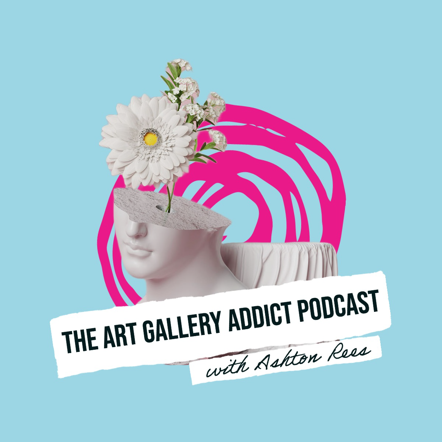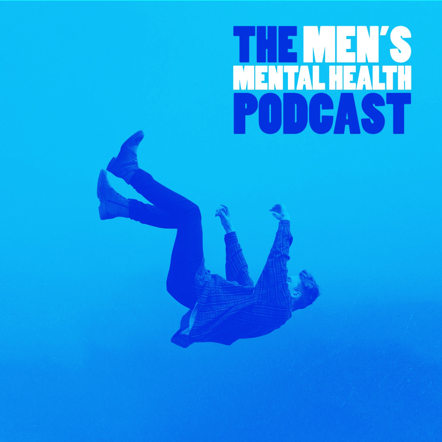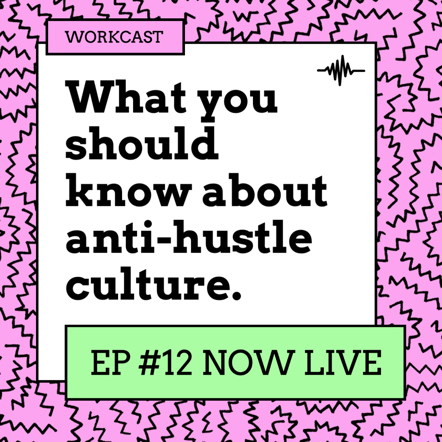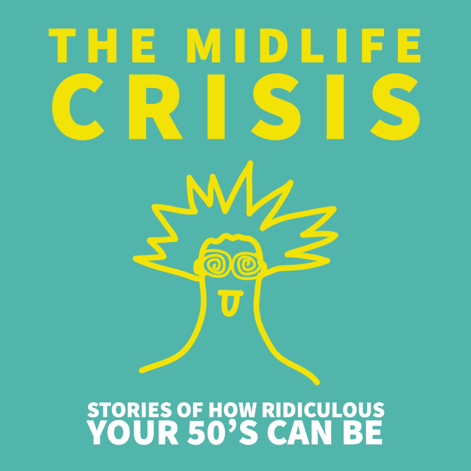How to start a podcast: a step-by-step guide
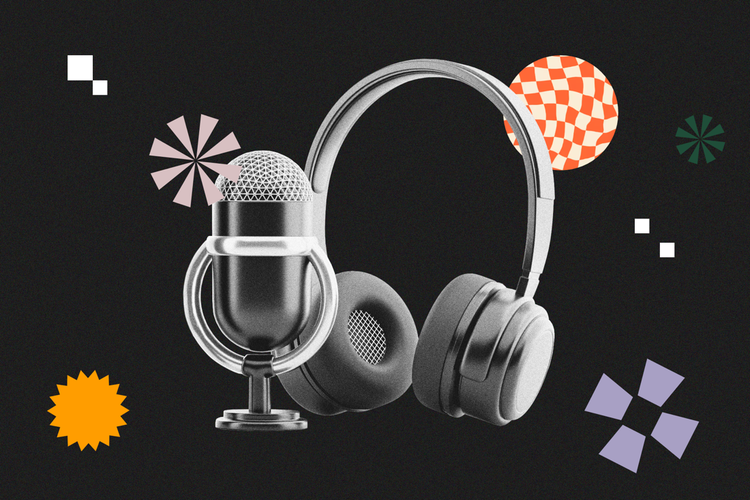
A podcast is an effective way to build your personal or business brand. Podcasts enable you to reach a broad audience and share your expertise with them in an engaging and entertaining format. They provide an excellent platform for storytelling, building relationships, and developing trust with potential customers or clients.
Want to know how to start a podcast from scratch? This in-depth beginner’s guide will give you everything you need to know to create your own podcast and start amassing listeners across various platforms and apps.
Summary/Overview
1. Develop a podcast idea
When it comes to starting a new podcast, it is essential to make sure that the topic of your show is something you are passionate about. The best podcasts are an extension of oneself and one’s interests. Therefore, it’s crucial to choose a topic you can talk about for extended periods without getting bored.
Choose a topic
It’s vital to ensure that the content of your show is relevant to both your brand and the interests of your listeners.
To that end, defining your podcast’s topic or niche is incredibly important. Understanding your target audience will help you focus your content, create more engaging episodes, and ensure your message resonates with your listeners.
Brainstorm concepts and episodes
When starting a podcast, it is essential to have a content calendar. Creators should brainstorm and come up with at least 10 episode ideas before launching their show — this is especially important for selecting your first episode. Having a plan in place will help set the overall tone of the podcast and ensure each episode appeals to the intended audience. You might need to broaden your niche if you can't develop ideas for your chosen topic.
To begin, consider podcast format and length. What topics will you cover? How often will episodes be released? Will there be interviews or solo segments? Answers to these questions can set the tone of your podcast and guide its direction.
Once you have determined the format and length of your show, it is time to start brainstorming concepts and creating an episode guide. Try writing your podcast’s description. Ask yourself questions such as:
- Who are the experts I would like to interview?
- What topics do my listeners want to hear about?
- What type of content will keep people listening and coming back for more?
Identifying answers to these questions can help you create a strong foundation for your podcast.
Name your podcast
Choosing a name for your podcast is one of the most critical steps in starting your show. Your podcast title should be short, catchy, and memorable so podcast listeners can easily recall it. It should also capture the essence of your show, as this will help you stand out from the competition and attract new listeners.
Additionally, it's essential to ensure that your podcast name is easy to spell and pronounce. Otherwise, you may miss out on potential listeners who cannot find your show due to spelling errors or mispronunciations.
Selecting an effective name also means studying popular podcasts in your genre — AKA the competition. In doing so, you can identify what will stand out in a crowded market. Examining the content of successful podcasts can provide valuable insights that can be used to create a unique, high-quality show.
2. Choose a podcast format
Choosing a format for your podcast is an essential step in launching your show. The format you choose will significantly influence the overall appeal, structure, and success of your podcast. Here are some of the most common podcast formats:
- Interview podcasts. Hosts interview guests – often experts or notable individuals – to spur a conversation and learn something new.
- Conversational podcasts. Hosts discuss various topics among themselves and express their personal opinions.
- Solo/Monologue podcasts. Hosts present content or share their experiences and thoughts without a co-host.
- Panel discussions. Multiple guests discuss a specific topic with hosts, demonstrating and sharing different perspectives.
- Storytelling podcasts. Hosts tell a standalone or serialized story with a narrative arc.
- News podcasts. Hosts focus on current events and news analysis.
- Educational podcasts. Hosts aim to educate listeners on a specific skill or subject.
- Scripted podcasts. Hosts present fictional stories, often in the form of dramas or scripted series.
- Video podcasts. Viewers can watch the host interact with guests, including facial expressions and body language.
Different formats resonate with different audiences, meaning your chosen format should align with the interests and preferences of your target audience (more on this in the next step). Additionally, the format you choose will significantly influence how the podcast is structured and presented. The format you choose sets the tone for the show, so choose wisely.
3. Plan and research your podcast
Although diving straight into recording and producing your podcast might be tempting, a well-informed podcasting strategy is the bedrock of any successful podcast. There are still a few more steps you must take before it’s time to record:
Identify your target audience
Identifying your target audience is crucial to creating targeted content that resonates with a specific group of listeners. Creating relevant content is only possible if you understand your target audience.
Consider creating listener personas by imagining who your ideal listener might be – consider factors such as age, gender, location, profession, and interest. Once you understand who your ideal listener might be and what catches their attention, it will be easier to tailor content to their needs and interests.
Additionally, consider engaging in market research. Research your podcast niche to understand the demographics and interests of potential listeners. Find existing successful podcasts in your niche and review audience feedback, audience insights, and social media discussions related to your topic.
Decide on the podcast length
Your genre, industry, and subject should all be considered when deciding on podcast length. Depending on the type of content being discussed, different lengths can be more appropriate or better received by an audience.
The topic being discussed also affects podcast length. Suppose the content is complex or requires further explanation. In that case, episodes may need to be longer to allow adequate time for discussion and exploration. On the other hand, if topics tend to require more concise dialogue, shorter episodes may be more appropriate.
Additionally, consider audience engagement. Depending on the type of content and the target demographic, some audiences may prefer shorter episodes, while others might enjoy longer ones.
Another element to consider is consistency. If podcasts are published regularly, then the ideal episode length should be essentially the same from week to week to maintain audience interest and loyalty.
The typical length of a podcast episode is somewhere between 20 to 30 minutes. This time frame allows podcasters to discuss topics in depth, answer listener questions, and engage with the audience entertainingly. Generally speaking, podcasts that are shorter than 20 minutes are too quick and may not offer enough content for listeners, while those longer than 30 minutes may take up too much of the listener’s time.
Decide on podcast frequency
Content and length are two important factors to consider when deciding on the frequency of podcast episodes. Content is essential in determining a suitable episode frequency, as different topics may warrant more or fewer episodes depending on the information available. For example, if a podcast covers topical news stories, then it may be better to release shorter episodes on a more frequent basis to stay current and up to date.
Length is also an essential factor when deciding on a podcast frequency. If episodes are short, more can be produced in a shorter time frame. If episodes are longer, avoid listener fatigue by releasing fewer over the chosen period.
4. Get the necessary podcast equipment
A podcast requires careful selection of proper recording equipment. Choosing the correct podcast equipment can be intimidating at first. Still, by following some basic guidelines, you can ensure that your podcast recordings are crisp, clear, and professional every time. Check out this list of podcast equipment:
- Computer: The right computer ensures the podcast recording and editing process runs smoothly and efficiently. Consider the type of processor and the amount of memory (or RAM) required for your specific podcast. For example, a more powerful processor may be necessary if you are producing multiple episodes with complex audio tracks.
- Microphone. Many different types of podcast microphones are available, ranging from USB microphones to condenser models. Dynamic mics are best suited for recording spoken word content. In contrast, condenser mics are more suitable for capturing instruments and acoustic sounds.
- Headphones. Consider comfort, sound quality, and price when selecting headphones. Make sure that the pair you choose fits securely on your head, and look for headphones that offer a balanced frequency response to ensure clear and accurate recordings.
- Recording software. Editing tools should offer complete control over various aspects of the audio. At the same time, effects and plugins can add additional layers of sound and production. Look for a program offering multi-track editing capabilities, equalization (EQ) tools, and noise-reduction algorithms. Consider checking out Adobe Audition for your professional audio needs.
- A mixer. A mixer is a device that takes audio signals from multiple sources, combines them, and sends them to a recording device such as a computer or recorder. It allows you to control the levels of each individual sound source to create an optimal mix for recording audio. When selecting a mixer, look for features such as multiple inputs and outputs, individual volume controls, EQ settings, and sound effects.
- Acoustic treatments. Acoustic treatments help to reduce reverberation and improve sound clarity by absorbing or diffusing sound waves within a space. With these tools, you can achieve a well-balanced mix of frequencies in your audio recordings, and eliminate undesirable noises like echoes and other unwanted sound reflections.
- Windscreen. A windscreen can help reduce unwanted background noise and provide a clearer recording sound. Windscreens come in various sizes ranging from small foam covers to full-size covers that can fit multiple microphones at once. Look for windscreens designed to reduce background noise while allowing sound to pass through.
- A camera for video podcasts. Having the right camera is essential for producing high-quality recordings that engage viewers. Digital cameras are typically the best for podcasting, offering features such as auto-focus, image stabilization, and high resolution. Other types of cameras to consider are DSLRs or mirrorless cameras, which can provide professional-level video quality.
- Mic arm. A mic arm can help ensure your microphone is positioned correctly, secure, and stable during your recordings. Consider factors such as size, weight capacity, mounting system, and adjustability – some arms offer full-range motion while others may be limited to only a few positions.
- Shock mount. A shock mount is a device that reduces vibrations and movement from mechanical shocks, such as handling noise and unwanted movements of the mic stand. Look for sturdy yet lightweight models that offer adjustable angles to fit your recording environment.
5. Choose a hosting service
A podcast hosting service is a platform that allows podcasters to store and manage their podcast audio files online. Choosing the right podcast hosting service is an important decision that can significantly impact your show’s success.
With so many options available, it is essential to research and find a podcast platform that meets your needs. There are several factors to consider when selecting a podcast hosting platform:
- Bandwidth and storage. Select a podcast hosting service that provides enough storage and bandwidth for your needs – make sure there is enough storage capacity for current and future podcasting needs and that the bandwidth is sufficient to handle your listener base.
- Distribution capabilities. Check which podcast platforms and directories the hosting service automatically submits your podcasts to. Ensure it supports major directories such as Spotify, Apple Podcasts, and Google Podcasts.
- Analytics capabilities. Analytics provide valuable insights into audience behavior and engagement levels. Analyzing listener data, such as demographics, listening habits, and download count, allows podcasters to make informed decisions regarding the content of their show and continue to improve upon it.
- Ease-of-use. Look for hosting services that are easy to use and understand to save yourself time and energy when managing your show and getting it ready for launch.
- Customer support. Access to high-quality customer support can be invaluable when troubleshooting any issues or questions that you may have about the platform.
- Monetization options. If you plan on monetizing your podcast through advertising or premium content, ensure the hosting service has built-in monetization features or easy integration capabilities.
- Website integrations. If you have or plan on creating a website for your podcast, make sure the hosting service provides tools for website integration.
Finally, be sure to consider the costs of hosting services. While many free services are available, these may not offer all the features or analytics you need. Research and compare the costs of different services before making a decision. Also consider the long-term implications of your choice – while some hosts may be cheaper in the short term, they can become more expensive as your podcast grows.
6. Record and edit your podcast
Once you have completed the above steps, it is time to record and edit your first podcast. This section will dive into the essential aspects of creating polished and engaging podcast episodes from a technical standpoint.
Record the podcast
When recording a podcast, sound quality is of the utmost importance. Before you begin recording, make sure to follow these essential setup tips to ensure the best possible audio quality:
- Find the right recording space. Having a quiet, uninterrupted space for recording is essential for producing high-quality audio that engages listeners. Consider factors such as size, layout, and soundproofing materials.
- Prepare your voice. Warming up your voice before recording ensures crisp, clear audio that engages listeners. Warming up your voice can help prevent strain, fatigue, and other vocal issues during long recording sessions.
- Create a noise profile. This type of recording should be done in a controlled environment to ensure accuracy and identify potential sources of interference and unwanted sound when recording audio. Record a sample of ambient noise in the room and use this to compare against the desired audio recordings so you can make any necessary adjustments before beginning recording sessions.
- Practice with the microphone. This should include familiarizing yourself with proper mic techniques, such as keeping it at least a few inches away from your mouth when speaking and adjusting levels accordingly. Experiment with different vocal delivery styles to help find the right tone for your podcast.
Once you have ensured a proper podcast setup, it’s time to start recording. Follow these tips while you are recording your podcast to make sure everything runs seamlessly:
- Be aware of your breathing and body movements. Breathing and body movements can significantly affect the quality of your recordings. Awareness of this movement during recording sessions can help you maintain a steady rhythm and reduce audio interference.
- Wear headphones. Both the hosts and guests should be wearing headphones. Using of headphones ensures all audio sources are audible and properly balanced in the final product. It also reduces the risk of feedback loops and other unwanted noises caused by unbalanced audio levels.
- Record each person on a separate channel. By having each person on their own channel, you can ensure that the dialogue is clear while having more control over sound levels and sound effects. Plus, having each participant’s audio on its own channel allows for easier mixing during post-production; this can be especially useful for podcasts with multiple guests or hosts.
- Mark mistakes with audio cues. Audio cues allow podcasters to quickly identify and address any issues that may arise while recording, ensuring that the final product is free from unwanted sounds or errors. Common audio cues used in podcasting include hand claps, whistles, or spoken words such as “cut” or “pause.”
- Use sound effects appropriately. While recording, it is vital to use sound effects sparingly and only when meaningful. Overusing sound effects can detract from the podcast’s message and cause listeners to lose interest.
- Stay hydrated. Staying hydrated as you record your podcast is essential for ensuring your vocal cords remain in top condition. Keep a water bottle nearby and take frequent sips throughout recording sessions.
- Take breaks. Taking breaks while recording a podcast is an essential consideration for any podcaster. Not only does it give the vocal cords and body time to rest, but it can also help to maintain focus and energy during long recording sessions.
Edit the podcast
When editing a podcast, the audio must be entertaining and informative while staying true to the flow of conversation. Careful podcast editing can help remove any unnecessary pauses or dead air, allowing the podcast to move along logically. This will make it easier for listeners to comprehend the content and follow the conversation without becoming distracted or bored.
To properly edit a podcast, you should familiarize yourself with audio editing and editing software basics. This includes understanding how to use tools such as equalizers, compressors, and noise reduction filters to adjust the sound quality of your recordings and remove any unwanted background noises. You should utilize specialized audio editing software like Adobe Audition to accurately identify and address any audio errors during editing.
When editing a podcast, the most crucial step is to review your recordings for any mistakes or issues that must be addressed. This includes listening back and identifying any parts of the conversation that need clarification or improvement. Take the time to review sound effects to make sure they are not too overbearing or distracting.
Choose intro and outro music.
Choosing the proper intro and outro music for your podcast is an essential step in setting the tone of your show. Music can make or break a podcast, as it establishes an atmosphere that either engages listeners or causes them to switch off.
The genre of music you choose should reflect both the content of your podcast and its overall tone. Upbeat pop tunes may be appropriate if you’re producing a lighthearted comedy show. If you’re discussing more serious topics, slower-paced acoustic tracks could better suit the mood.
It’s also critical to think about how long each piece will last; most intros should be around 20 seconds, while outros often need to last longer depending on additional content, such as credits or contact information at the end of each episode.
A podcast’s intro and outro music should coordinate and emphasize the points being discussed in the show. Consider checking out and using royalty-free music. Music can be used as a powerful tool to draw listeners in at the start of an episode, establish a dynamic atmosphere, and provide a memorable ending that encourages listeners to return for more.
7. Create podcast artwork
Creating podcast artwork is a crucial step in creating and maintaining a visual brand identity – podcast artwork is a visual representation of your podcast’s brand, making it easier for listeners to recognize and remember your podcast. Your podcast artwork is often a potential listener’s first impression of your brand, meaning that eye-catching podcast artwork is a great way to increase visibility across platforms and build brand awareness.
Create a podcast logo
A podcast logo is a visual representation of your brand. It should be used across various platforms to establish brand consistency. Your logo serves as a recognizable symbol that helps listeners identify and remember your podcast.
Your logo is the most visible representation of your brand. Not only does it help to make your product more recognizable, but it also serves as a reminder of the quality and value associated with your business.
Create podcast cover art
Whereas your podcast’s logo will stay consistent across platforms, cover art can change with each podcast episode – it’s the image listeners will see when browsing or playing a particular episode.
When choosing or creating cover art for a project, it’s essential to consider the tone of the artwork. Your cover should accurately reflect the content and message of your podcast, so carefully consider how the visuals will make your audience feel. Color, texture, and composition can all influence how someone interprets your work, so select graphics and images that speak to your target audience.
Creating cover art for a project is vital to ensure it is accepted into any directory. Directory requirements for cover art vary greatly, but generally a few key elements will help ensure your artwork meets the requirements.
- Consider size and resolution – most podcast directories have specific standards for cover art, so be sure to check their requirements before submitting.
- Include a title and logo as well as any other relevant information that helps listeners understand what your podcast is about.
- Artwork should accurately reflect the content of your podcast and interestingly engage with potential listeners.
Along those lines, it is crucial to keep the design simple and uncluttered to help maximize its impact. Too much detail or complexity can make it difficult for viewers to understand or appreciate the artwork. It can also cause distraction from the main message being communicated.
8. Submit your podcast to directories
Submitting your podcast to directories is a crucial part of making your podcast accessible to a broader audience. Once you have at least one podcast episode ready and it is being hosted on a podcast hosting platform, it’s time to put your hard work out there.
Prepare all necessary podcast information, including its title, description, category, and other relevant details. Make sure your podcast logo and cover art fit with the required dimensions.
Generate a podcast RSS feed from your hosting platform (this should be done autmatically) and start submitting. Submit your podcast to Apple Podcasts, Spotify, Google Podcasts, and other relevant directories, like Amazon, Stitcher, TuneIn, and Podbean.
9. Market your podcast
Marketing your podcast on social media is a powerful way to increase visibility, attract new podcast listeners, and engage with your existing audience. Find out what social media platforms your target audience frequents – consider TikTok or Instagram for Gen Z and LinkedIn or Facebook for baby boomers – and work on creating a strong presence there.
Create dedicated social media profiles for your podcast, and use consistent branding across channels. Make sure to post consistently and share engaging content, even if you are not actively rolling out new podcast episodes. And whenever a new episode is coming up or has just been released, promote it across your channels to generate buzz.
Use hashtags
Hashtags can help increase the visibility of your content, as they allow users to search quickly for specific topics and find related content. They can also help widen your reach by allowing listeners to share and discuss your podcast with others.
When promoting a podcast online, use broad and niche hashtags to reach the widest possible audience. Broad hashtags generally relate to the topic but are not overly specific, such as #podcasting or #audiobooks. These tags can help you reach people who may not know much about the subject but could still be interested in learning more.
On the other hand, niche hashtags are those that are related to a more specific aspect of your podcast, such as #bookreviews or #audiobooksforbeginners. You could use a hashtag for a genre or author. This helps you reach an audience with an established interest in the topic and may already be searching for related content.
Create a website
Setting up a podcast website is one of the best ways to create an engaging and professional platform for your content. A website allows you to showcase your episodes and podcasts and offer additional resources such as transcriptions or show notes. Additionally, setting up a website makes it easy for listeners to find and subscribe to your podcast, which can help grow your audience.
Having a website also gives you control over the branding and design of your podcast. It can be a central hub where listeners can find all the information they need about upcoming episodes and events. Overall, having a website can improve the visibility of your podcast and build more engagement with potential listeners.
Invest in advertising
Paid advertising can be an effective way to speed up the growth of a podcast more quickly than relying solely on organic traffic. Paid ads give podcasters access to more extensive, targeted audiences that would not normally interact with their content, increasing their chances for success in a much shorter period. Paid ads can also help podcasters gain valuable insights into their audience, providing them with critical data about who is listening and what content resonates best.
Advertising your podcast through posts can be a highly effective way to reach an interested audience. Pursue people who have already expressed an interest in podcasts or related topics using targeted keywords or phrases. This will help with search engine optimization (SEO), helping to boost your presence on search engine results.
Actively connect with your audience
Connecting with customers and creating a relationship with them is essential for the success of any podcast. This can be done by actively engaging with and responding to listeners’ questions, posts, and comments; schedule your social media content so your listeners don’t miss a beat. Not only will this help to build trust and loyalty amongst your audience, but it can also provide valuable feedback that can be used to improve the content and quality of your show.
One way to engage with your listeners is to encourage them to leave reviews or ratings for each episode. This can provide insight into their experience and help you identify areas where your podcast might need improvement. Allowing listeners to comment on and discuss episodes can also be beneficial; this not only helps to create a sense of community, but it can also open up conversations about topics or themes that could be explored further in future episodes.
When engaging with listeners on social media, responding quickly and taking their feedback seriously is essential. Consider hosting Q&A sessions where fans can ask questions directly, which can be done through live streams or online forums.
Additionally, consider including a call to action (CTA) at the beginning and end of your podcast. Talking directly to your listeners and encouraging them to subscribe or tune in next week is a great way to connect with your audience and gain new subscribers.
10. Stay consistent and evolve
Staying consistent and continually evolving is a crucial part of building a dedicated audience and improving the quality of your podcast over time.
Make sure to stick to your content calendar and schedule content consistently. Consistency is a great way to build trust with your audience because they will know when to expect new content.
Adapt to listener feedback – understand what your audience enjoys and what they would like to see improved. Experiment with various formats and topics and see how they resonate with your target audience.
Lastly, stay informed in your niche. Stay current on news, trends, and developments relevant to your podcast’s niche to ensure your content remains relevant and provides value to your audience.
How to make money with your podcast
Monetizing a podcast can be a great way to add an additional stream of income and give your show’s audience more value. You can generate revenue from podcasting in various ways, ranging from sponsorships and advertisements to selling merchandise or offering premium content. Here are some tips for getting started with podcast monetization.
- Establish your audience: Before you can start monetizing your podcast, it is vital to establish a sizable and engaged audience. This will help ensure that any potential sponsors or advertisers see the value in partnering with your show and give you an idea of the potential revenue available from each episode.
- Look for sponsors: Partnering with sponsors is one of the most popular ways to make money from podcasting. This involves finding companies interested in promoting their products or services through your show, typically in exchange for a flat fee or percentage of sales.
- Find advertisers: Besides sponsorship opportunities, you can consider working with advertisers looking to reach your audience. This could involve selling ad space at the beginning or end of each episode or even allowing companies to sponsor specific segments within an episode.
- Sell merchandise: Selling merchandise is another great way to make money from podcasting, as it allows you to generate revenue without relying on sponsors or advertisers. This could involve selling t-shirts, mugs, hats, and other items related to your podcast or brand.
- Offer premium content: Another option is to offer premium content for listeners willing to pay a fee or subscription. This could include access to exclusive interviews, bonus episodes, or early access to content.
It is important to note that monetizing a podcast can take some time to get off the ground. Hence, patience and dedication are crucial to achieving success in this area.
How to get podcast sponsors.
Finding sponsors for a podcast is an effective way of earning money from the show. It can help provide additional value for listeners. Before looking for sponsors, it is essential to establish a sizable and engaged audience. This will help ensure that potential sponsors will see the value in partnering with your show, and give you an idea of the potential revenue available from each episode.
Once you have an established audience, start looking for sponsors. You can contact companies directly or use sites that specialize in connecting podcasters with potential sponsors. Research any local businesses who may be interested in sponsoring your show, as this immediately connects your podcast with the immediate community around you.
When searching for sponsors, think about the type of companies you want to work with and ensure their product or service aligns with the theme and content of your podcast. Consider the fee or commission structure that you are comfortable with and decide whether this is something you would like to discuss directly with each potential sponsor or set a standardized fee.
Finally, when negotiating terms with sponsors, be upfront about your show’s performance and any metrics you are willing to provide in exchange for payment. This will help ensure that everyone involved understands what is expected from the partnership and can help avoid any potential conflicts.
By following these tips, you can well-suited sponsors for your show and ensure that everyone involved understands what is expected in the relationship. This will help to maintain a successful partnership between you and your sponsors and provide additional value for your listeners.
Creating and marketing a successful podcast requires all the right tools. To make your show stand out from the crowd, you must ensure that it is polished, professional, engaging, and has accompanying visuals. Multi-pronged promotion, such as with hashtags or advertising, can help increase the reach of your show. Finally, actively connecting with your audience through Q&A sessions or responding to feedback can improve your podcast's content quality while building trust amongst listeners. Even if you are a beginner, with these tips in mind, you will surely create a fantastic new podcast that engages audiences worldwide.
This blog post was updated on February 15, 2024

